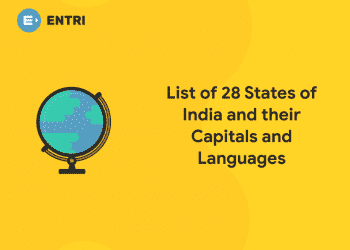Table of Contents
Celebrated on the 8th of May, the World Thalassemia Day 2024 is devoted to raising awareness among the general public and decision makers about thalassemia, promoting and strengthening the lifelong and difficult struggle of patients against this severe blood disease, and commemorating all the people who are no longer with us, while renewing our promise to keep fighting until the final cure for thalassaemia is found.
Every year since 1994, the Thalassaemia International Federation (TIF) has been organising many diverse activities for the International Thalassaemia Day, with the objective to draw the attention of general public, patient associations, public authorities, healthcare professionals, and industry representatives, to fuel discussions and promote actions on a particular theme related to the prevention, management or treatment of the disease in a patient-centered manner.
What is Thalassemia: Know More
Thalassemia is a potentially life-threatening yet preventable genetic haemoglobin disorder that constitutes the world’s most commonly inherited haemolytic anaemia. The disease is an inherited one and the treatment differs from person to person. A person suffering from thalassaemia disease will have a few red blood cells and very little haemoglobin. It is an autosomal recessive blood disorder which gets inherited from parents to the children through genes. This disorder causes weakening and destruction of the red blood cells that affect the formation of heamoglobin in the body. This can make life very difficult, as it usually requires multiple blood transfusions. Some people with the disease need a blood transfusion every two weeks.
According to the latest statistics, around 280 million people throughout the world have thalassaemia and among them about 439,000 have a severe form of the disease. It is highly prevalent in malaria-endemic or previously endemic parts of the world, including the Southern Mediterranean, Middle East, Southeast Asia, and Africa, but through the years and for some time now it has become a global public health concern, as a consequence of heavy population movements and increasing migration flows across the world.
About 80% of patients with thalassaemia live in low and middle income countries and hence struggle to cope with an increasing burden of the disorder year on year. In the majority of countries, patients with the most severe type, namely β-thalassaemia, do not reach or surpass the age of 20-25 years. This is due to belated diagnosis of their condition, which could have been prevented if they had knowledge, experience and best practices regarding the effective prevention, control and management of the disease.
World Thalassemia Day 2024 Date
As the sun rises on May 8th, the world comes together to observe World Thalassemia Day, a day dedicated to raising awareness about thalassemia, a genetic blood disorder that affects millions of people worldwide. On this day, we reflect on the challenges faced by individuals living with thalassemia and renew our commitment to supporting and empowering them.
World Thalassemia Day 2024 Theme
The theme for World Thalassemia Day, which is observed annually on May 8th, 2024, is “Empowering Lives, Embracing Progress: Equitable and Accessible Thalassaemia Treatment for All“. The theme highlights the need for equal and accessible medical treatment for individuals affected by thalassemia.
Thalassemia is a genetic blood disorder that affects an individual’s ability to produce hemoglobin, which can lead to anemia and other health complications. The theme emphasizes the importance of empowering individuals affected by thalassemia through accessible and affordable treatment options. It also focuses on the progress being made in the field of thalassemia research and treatment. The aim is to create greater awareness of thalassemia and promote equitable access to effective treatments for all individuals affected by this disorder.
Types of Thalassemia
There are two main types of Thalassaemia:
Alpha Thalassaemia – happens when your quality identified with the alpha globin protein (a sub unit of hemoglobin) is missing or transformed.
Beta Thalassaemia – happens when quality imperfections influence the creation of the beta globin protein, which is likewise a sub unit of hemoglobin.
How to diagnose Thalassemia?
Thalassemia is diagnosed through blood tests which include doing a complete blood count (CBC) and special hemoglobin tests. Through a sample of blood, CBC measures the amount of hemoglobin and the different kind of blood cells, such as red blood cells.
Hemoglobin tests measure the types of hemoglobin in blood.
Moderate and acute thalassaemia is usually diagnosed in childhood. This is because signs and symptoms, such as acute Anemia usually occur at an early age of 2 years. People who have mild form of thalassemia may get diagnosed after a routine blood test, as it will detect if they have anemia.
What are the Symptoms of Thalassemia?
Some of the symptoms are mentioned below:
- Drowsiness and Fatigue
- Chest torment
- Shortness of breath
- Delayed development
- Headaches
- Jaundice and fair skin
- Dizziness and faintness
Significance of World Thalassemia Day 2024
The primary objective of the day is to improving awareness about thalassaemia by sharing reliable information and knowledge across different languages and cultures, making it accessible to people even in the most remote and underserved areas and communities of the world. Lack of proper knowledge about the disease is affecting the developing countries of the world, where more than 80% of patients with thalassaemia are born and live! It is our duty to provide them access to knowledge and resources which will help them safeguard and manage their own health.
World Thalassemia Day 2024 History
Panos Englezos, the president and founder of Thalassaemia International Federation (TIF), established International Thalassaemia Day in 1994 in memory of his son George, who lost his life to thalassaemia.
The history of World Thalassemia Day dates back to the efforts of various organizations and individuals dedicated to combating thalassemia and supporting those affected by it. Thalassemia is prevalent in many parts of the world, particularly in regions where consanguineous marriages are common. The condition affects the production of hemoglobin, leading to anemia and other complications that require lifelong management.
The inaugural World Thalassemia Day was celebrated in 1994, organized by the Thalassemia International Federation (TIF), a global organization committed to promoting awareness, advocacy, and research related to thalassemia. Since then, World Thalassemia Day has become an annual event, gaining increasing recognition and participation from governments, healthcare professionals, advocacy groups, and the general public.
Objective of World Thalassemia Day 2024
The following are the objectives of World Thalassaemia Day 2024:
- To raise awareness about the disease, its symptoms and ways to live with it
- To raise awareness about the importance of vaccination for children’s health, society and the whole world.
- If a person is suffering from thalassaemia, to raise awareness that before marriage it is important to consult a doctor.
- Redress misconceptions about vaccinations.
- Improve early thalassaemia detection and control
- Challenge the stigma and discrimination, caused by lack of understanding of the condition
How to Observe World Thalassaemia Day?
Every year the Thalassaemia International Federation (TIF) comes up with various activities that spread awareness for thalassaemia. A few exercises and occasions are sorted out in open spots like schools, universities, instructive establishments to mindful individuals about the infection, its manifestations and preventive measures. Likewise, patients and their relatives are urged to participate in the occasion to pick up information about the infection.
On this day, let us pledge to go all out to encourage those who are suffering with this disorder and provide them with improved access to educational resources and to help to change attitudes towards carriers and patients living with the disease.
World Thalassaemia Day Quiz 2024
What are the two major types of thalassemia?
a) Alpha and Beta
b) Beta and Gamma
c) Aloha and Gamma
Ans: a) Alpha and Beta
Thalassemia is most often treated with red blood cell transfusions. True of False?
a) True
b) False
Ans: a) True
What ethnic groups are at risk for thalassemia?
a) Italian descent
b) African descent
c) Greek descent
d) All of the above
Ans: d) All of the above
Is there a cure for thalassemia?
a) Yes
b) No
Ans: a) Yes
Is thalassemia contagious?
a) Yes
b) No
Ans: No
Which of the following is not the symptom of Thalassemia disease?
a) Slow growth and Weakness
b) Abdominal cramps
c) Dark Urine
d) Facial bone deformities
Ans: b) Abdominal cramps
Which blood tests detect if a person is a carrier of thalassemia?
a) complete blood count (CBC)
b) A reticulocyte count
c) Prenatal testing
d) All of the above
Ans: d) All of the above












